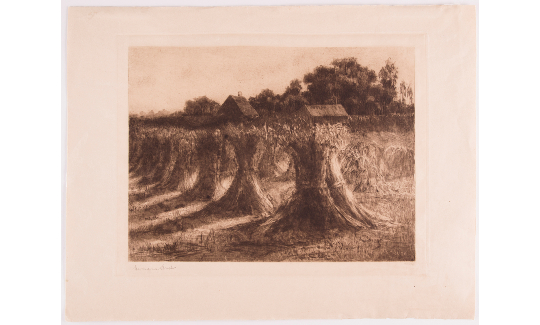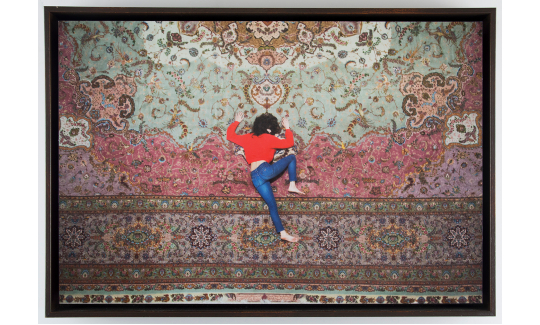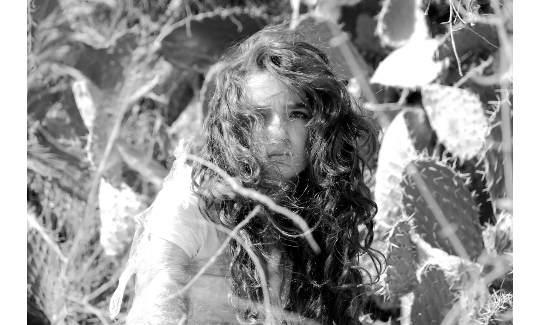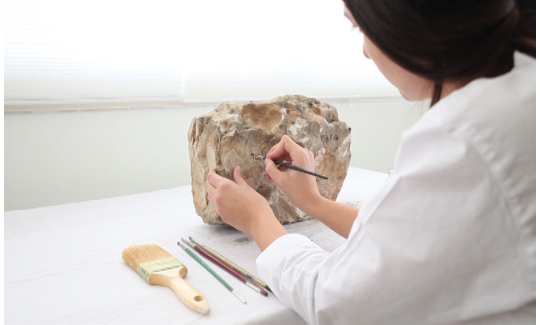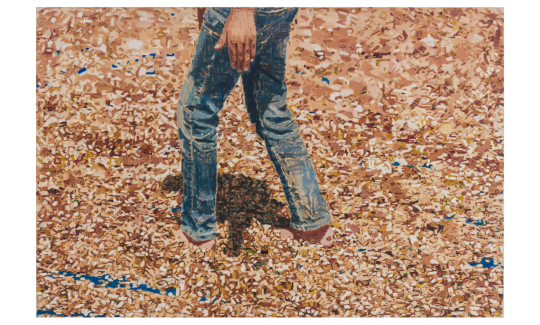Local art, whether Israeli or Palestinian, has over the generations sharpened its gaze upon the homeland's scenery – a gaze traditionally burdened by concern and distress, on both the personal-existential and the historical-geopolitical level. However, the local artistic discourse surrounding this issue has scarcely considered its gender-oriented aspects. Neither the Israeli nor the Palestinian artistic discourse distinguishes between the masculine and the feminine gaze with regard to this charged subject. The present exhibition cluster seeks to address this complex and mostly neglected issue.
Scholar W.J.T. Mitchell, in his famous book Holy Landscape, writes that the expression "Holy Landscape" “evokes images of paradise, the land of milk and honey […] Beulah Land that Blake and Bunyan identify as the suburban, pastoral surroundings of the holy city of Jerusalem […] It is an innocent landscape, literally the harmless place where violence is unknown.” Mitchell states that the perception of the landscape represents a network of covert meanings in mythic and ideological contexts. Depictions of the landscape conceal various kinds of power structures associated with imperialism, colonialism, and the spirit of progress that involves the exploitation of natural resources. He argues that representations of the local landscape result from an outlook that sees the white, Western male as a sole universal and objective viewer, as compared to "native" peasants or women.
Geographer Doreen Massey notes that the space of the homeland is coded as "female" – a "motherland" or the place of the lovers. This is a product of a masculine cultural tradition that favors a fixed view of the place as providing identity and security. Scholar Anton Kaes also notes that woman embodies safety and constancy, thus defining the homeland as a representation of a male fantasy regarding the sense of belonging, which is associated with the mother figure. Curator and scholar Tal Ben-Zvi notes that women are required to take upon themselves the "burden of representation," as symbolic carriers of the community's identity and honor. In many cultures, a female figure, often a mother, symbolizes the community's spirit as an allegorical figure rather than as a subject. Woman is defined as a myth and a symbol by a male national cultural system.
The gender issue implicit in representations of the homeland in local art is examined in the three exhibitions comprising the "Tar and Milk" cluster. The exhibition Present Absentee seeks to examine the theme of the homeland in the works of contemporary Palestinian female artists. Through this theme, the artists explore their status and identity as a double minority: on the one hand, they are Palestinian women raised in patriarchal communities; on the other hand, they live and work among the Jewish majority in a Western environment in Israel. The artists address the issues of colonialism, gender roles, and inter-cultural boundaries. Their art enables them to investigate their complex identity, leading to social change.
The exhibition Disparate Memories: New Acquisitions in the Museum Collection focuses on young art in Israel and seeks to distinguish between the male and female gaze upon the landscapes of the "Holy Land." The homeland seems like a scarred, multi-layered tissue, a Garden of Eden "looted" by imperialist forces. In parallel, the female perspective on cultural and ideological patterns proposes a dialogic form of expression, without blurring or diminishing reality and its conflicts.
The third exhibition, called Hermann Struck: A Foreign Homeland, reflects Struck's perception of the homeland, inspired by the landscape images of Romantic German nationalism. The exhibition explores Struck's work through the concept of "Heimat" – German for "homeland." This concept, shaped in Germany in the mid-nineteenth century, is associated with pastoral images of the countryside and ideas of "innocence and simple values" linked with the communal and national spirit. In his rural images, Struck's gaze combines signs of fertility with signs of decay. The exhibition reveals Struck's attempt to formulate the idea of Judaism in terms of the space of German culture – the same culture that would, a few decades later, purge itself of Judaism to the point of near extermination.

